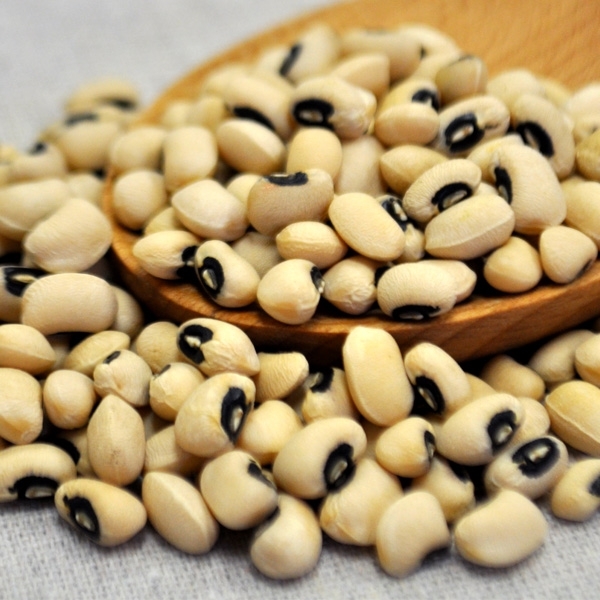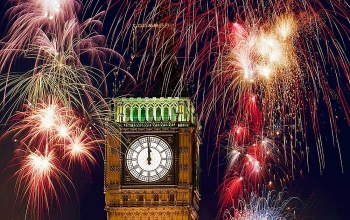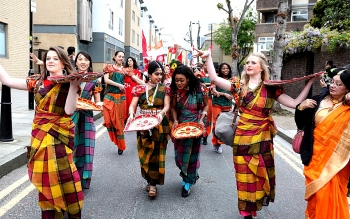The Most Common New Year's Eve Customs Observed in the United States
 |
| Interesting New Year Traditions in the US - Photo: Grateful |
| Table of Contents |
The United States, like every other region, has its own unique New Year's traditions. Refer to this article for immediate exploration.
New Year’s Champagne Toast
A highly renowned custom on New Year's Eve in the United States is the act of raising a glass of champagne immediately after midnight to greet the arrival of the New Year and invoke good fortune. The tradition of the champagne toast at midnight is widely embraced in numerous countries and originates from the superstition that consuming grapes on New Year's brings good fortune.
Midnight Kiss
The tradition of kissing at midnight has its origins in ancient Europe, where it was believed to serve as a protective measure against malevolent entities. Kissing was traditionally thought to bestow blessings and bestow good fortune upon individuals as they embarked upon a new year.
Keep Cash in Your Wallet
An enduring New Year's superstition involves ensuring that one possesses currency in their wallet precisely at the stroke of midnight on New Year's. According to popular belief, starting the New Year with an empty wallet is thought to be an indication of financial difficulties that may persist throughout the year.
“Auld Lang Syne”
The poem "Auld Lang Syne" was originally composed by the Scottish poet Robert Burns in the 18th century. The song's meaning is rooted in the phrase "old long ago," while also evoking a sense of nostalgia as it reminisces about the love and benevolence of bygone days. The practice did not attain the status of an American tradition until at least 1929, but it appears appropriate when bidding farewell to an old year and welcoming a new one.
Start the New Year Off Debt-Free
Just like the practice of carrying cash in one's wallet, it is considered a New Year superstition in the US to begin the year with minimal debt. If feasible, commence the process of settling any outstanding debts you may possess prior to the commencement of the New Year, in order to initiate the upcoming year with a fresh start, metaphorically speaking.
Cleaning & De-cluttering Your House
Starting the New Year off with a freshly cleaned home is a common New Year’s superstition in the U.S. as well as other countries. Cleaning and de-cluttering your home helps to clear out any negativity from the past year and also makes room for more positivity to enter your life. If you enjoy aromatherapy, consider using New Years Lucky Scents and essential oils.
Dropping ball
 |
| Photo: American House Kyiv |
The culmination of the New Year's Eve celebration in Times Square involved the descent of the ball at midnight, which was initially followed by a display of fireworks. Fireworks were prohibited temporarily, prompting the search for a suitable substitute that would produce a similar dazzling effect. This marked the commencement of the 700-pound sphere that attracts millions of viewers annually, commencing at 11:59 p.m., both in person and on television.
Resolutions
The Babylonians, approximately 4,000 years ago, are believed to be the earliest known individuals to have made New Year's resolutions. They were created as offerings to the deities in anticipation of a prosperous year. The Romans emulated this practice by presenting sacrifices and pledging to uphold virtuous behavior to their deity Janus. For Christians, the initial day of a new year serves as an opportunity to contemplate previous errors and commit to improving. Today, the religious connotation of resolutions has largely vanished, with most resolutions now centered around personal development in a broader sense.
Setting off Fireworks
 |
| Photo: Time And Date |
Observing a vibrant and boisterous fireworks exhibition is a customary practice during New Year's festivities in the United States. The loud noises are thought to repel malevolent entities during the transition into the New Year, which is why certain individuals opt to strike pots and pans or employ other noise-producing devices at the stroke of midnight on New Year's Eve.
Wearing New Clothes
It is customary to don new attire when celebrating the arrival of the New Year. It is believed that new garments represent a new beginning for a prosperous year ahead. Furthermore, who can resist the opportunity to acquire a fresh ensemble for the occasion of New Year's?
Take Your Luggage Around the Block
To increase your travel opportunities in the upcoming year, a popular New Year's belief suggests taking your suitcase for a stroll around the neighborhood. This atypical New Year's superstition may elicit some perplexed expressions, but it could also enhance your prospects of embarking on more journeys in the upcoming year!
Black-eyed peas
 |
| Photo: Ways to Cap |
Black-eyed peas are widely recognized as the most prevalent and renowned food associated with good fortune. In fact, they are a legume, not a vegetable, and there exist various hypotheses regarding the reasons behind their association with good fortune. One hypothesis posits that the artifact in question was the sole remnant following the plundering of a Confederate Army food stockpile by Union soldiers. Additionally, it is worth noting that recently emancipated slaves commemorated their newfound freedom by partaking in this essential dietary item, which happened to be one of the few provisions permitted to them.
Pork
The association of pork with good luck largely stems from the behavioral characteristics of pigs. Several animals, including chickens, exhibit a behavior of scratching in a backward direction, while pigs bury their snouts in the ground and move in a forward direction while eating. Moving forward is the desired direction to proceed in the New Year. Additionally, the fact that pigs are conventionally culled during the autumn season makes them a convenient option for preservation and consumption during New Year's celebrations. The practice of consuming pork and cabbage on New Year's Day was seemingly introduced to America from Germany and Eastern Europe.
Cabbage
The cabbage tradition on New Year's Day involves a specific timing aspect. The crop is gathered during the later part of autumn and allowed to undergo fermentation for a duration of six to eight weeks, resulting in its readiness coinciding with the arrival of the new year. According to Times Square Chronicles, the leafy plant is also thought to be associated with longevity and prosperity.
Cake
Various cultures have distinct traditional cakes that they serve specifically on New Year's Day. A common characteristic shared by many of them is the inclusion of a special coin or other small item during the baking process. The fortunate individual who receives the portion containing this item is believed to be bestowed with good fortune for the entirety of the upcoming year.
Greens
The color green is commonly associated with wealth and success, which is why it is often seen on the dining table during New Year's Day. In Southern tradition, it is believed that hanging them by the door can serve as a deterrent to evil spirits. Therefore, you can either consume them or suspend them next to your entrance — the decision is yours.
HOPES OF PROSPERITYVarious customs have developed in foreign nations with the intention of attracting wealth and prosperity in the upcoming year. It is believed in certain Latin American countries that the color of one's undergarments can influence one's prosperity and success. The color red symbolizes love, white represents harmony, and green signifies health. In Spain, consuming 12 grapes, commencing precisely at midnight and subsequently ingesting one grape for each subsequent stroke, is believed to bring about good fortune. In the Philippines, circles symbolize prosperity. Therefore, it is customary to observe individuals donning polka dots and carrying loose coins in their pockets. This practice is believed to attract wealth, as the sound of the coins is thought to bring about financial abundance. While New Year's Eve customs revolve around festivities and merrymaking, New Year's Day customs typically prioritize the choice of food to consume (and perhaps recuperating from excessive revelry the previous night). Several foods commonly feature on New Year's Day menus due to their association with good fortune. |
 What are New Year traditions in Australia? What are New Year traditions in Australia? New Year’s Australian celebration is famous in the whole world. In this article, we figure out the traditions in the New Year of Australia available ... |
 What are New Year Traditions in the UK What are New Year Traditions in the UK New Year is a promising transaction between the old year and new year. In New Year's Eve people will celebrate traditional ceremony. In the UK, ... |
 New Year Traditions and Cultural Celebrations in India You Should Know New Year Traditions and Cultural Celebrations in India You Should Know India is the land of Unity in Diversity. Its rich history has owed it a wide range of political and cultural transformations. New Year celebrations ... |























